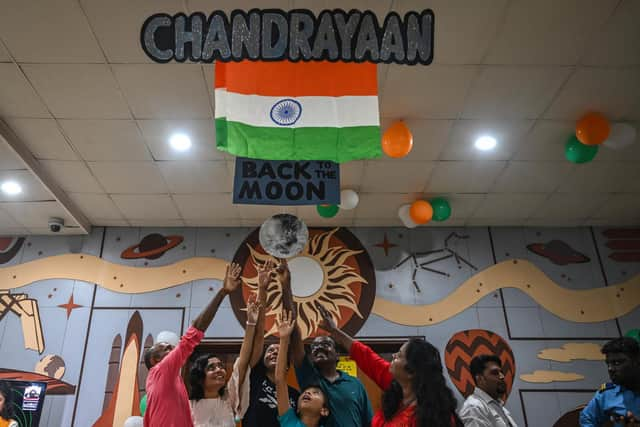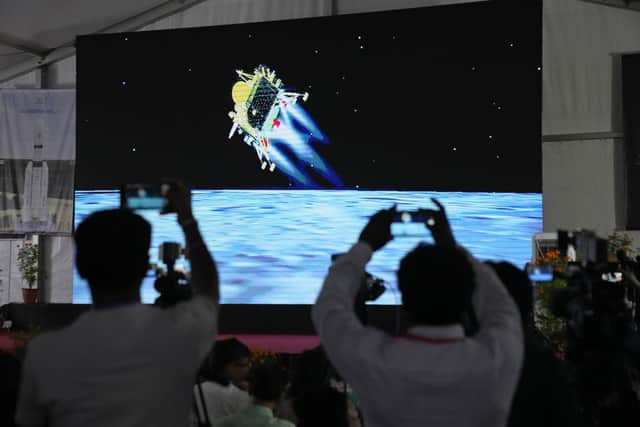India successfully lands spacecraft near Moon’s south pole as it searches for frozen water reserves
When the Chandrayaan-3 spacecraft successfully landed near the Moon’s south pole, the control room at the Indian Space Research Organisation (Isro) erupted into applause.
Broadcast on a screen, smiling and waving an Indian flag as the craft made a safe landing, India’s prime minister Narendra Modi addressed his country’s space scientists – and the general population, who had awaited the historic moment with anticipation.
Advertisement
Hide AdAdvertisement
Hide Ad"India is now on the Moon,” Mr Modi said. "The sky is not the limit.” He added: "We can all aspire for the Moon and beyond."


The mission – the first time anyone has landed on the Moon’s south pole – is uncharted territory that scientists believe could hold important reserves of frozen water and precious elements.
It was India’s second attempt in four years to land a craft on the Moon, joining the United States, the Soviet Union and China in achieving the landmark.
A lander with a rover inside was orbiting before successfully touching down on the lunar surface, creating an agonising wait for India's space scientists in the southern city of Bengaluru. The rover will now roam around the rocks and craters on the Moon gathering crucial data and images to be sent back to Earth for analysis.
Earlier this week, an unmanned space craft sent by Russia crashed into the moon’s surface.


The unmanned craft had been due to make a soft landing on the Moon's south pole, but failed after spinning into an uncontrolled orbit. Luna-25 was Russia’s first moon mission in nearly 50 years and was racing to land on Earth’s satellite ahead of an Indian spacecraft.
The highly-anticipated Indian Moon landing was being watched by thousands of people crowding around televisions in offices, shops, restaurants and homes. Many prayed on Tuesday for the success of the mission, with oil lamps on the river banks, temples and religious places, including the holy city of Varanasi in northern India.
India's Chandrayaan-3 – "moon craft" in Sanskrit – took off from a launchpad in Sriharikota in southern India on July 14, heading for the far side of the Moon.
Advertisement
Hide AdAdvertisement
Hide AdIsro was founded in 1969 with the goal of designing and launching satellites for forecasting storms, mitigating floods and bolstering telecommunications in the country – rather than space exploration. It was not until the 1990s that it began to design and launch satellites on it own and has since carved out a niche as a major global player in space exploration.
Isro said: "India's pursuit of space exploration reaches a remarkable milestone with the impending Chandrayaan-3 mission, poised to achieve a soft landing on the lunar surface. This achievement marks a significant step forward for Indian science, engineering, technology, and industry, symbolising our nation's progress in space exploration."
The organisation said that a successful Chandrayaan-3 landing would be monumental in fuelling curiosity and sparking a passion for exploration among youth.
"It generates a profound sense of pride and unity as we collectively celebrate the prowess of Indian science and technology," the body added. “It will contribute to fostering an environment of scientific inquiry and innovation.”
Comments
Want to join the conversation? Please or to comment on this article.
